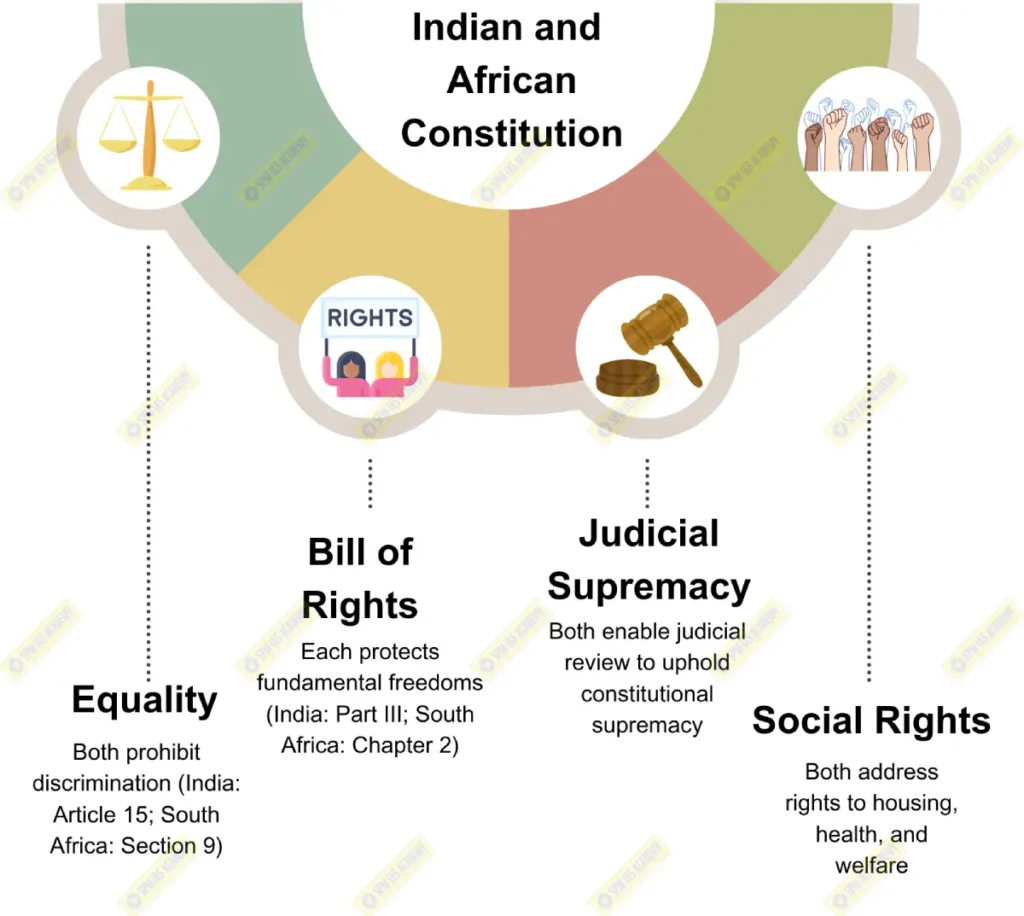The amendment procedures for the Constitutions of India and South Africa enable flexibility in governance while safeguarding foundational principles. Both countries have detailed processes that allow their respective legislatures to amend the Constitution, though the mechanisms reflect their unique political and historical contexts.
Amendment Procedures in India
The Constitution of India provides a flexible yet structured approach to amendments under Article 368, categorizing amendments into three distinct types:
- Simple Majority: Certain provisions can be amended by a simple majority in both houses of Parliament, similar to ordinary legislation. This applies to areas such as Parliamentary rules and matters related to citizenship (e.g., Article 5-11).
- Special Majority: Most amendments require a special majority (two-thirds of members present and voting) in both the Lok Sabha and the Rajya Sabha. This covers fundamental rights, DPSPs (Directive Principles of State Policy), and legislative powers, among others.
- Special Majority with Ratification by States: Amendments affecting federal structure and state powers need, besides a special majority in Parliament, ratification by at least half of the state legislatures. Examples include changes to election processes, the judiciary, and the distribution of legislative powers.
The Kesavananda Bharati case (1973) established the Basic Structure Doctrine, which prohibits Parliament from altering the Constitution’s “basic structure” (e.g., democracy, secularism). This doctrine is not explicitly stated but is a judicial safeguard that protects core principles from amendment.
Amendment Procedures in South Africa
The South African Constitution of 1996 is known for its rigid and highly structured amendment process, with three main levels of amendment, under Section 74:
- Simple Majority: Non-substantive changes, like technical corrections, may require only a simple majority in the National Assembly.
- Two-Thirds Majority: Most constitutional amendments require a two-thirds majority in the National Assembly. This is stricter than in India and reflects the emphasis on consensus, covering amendments like rights alterations and governmental powers.
- Two-Thirds Majority and Provincial Approval: Amendments that affect provincial interests, such as those impacting the National Council of Provinces (NCOP) or provincial boundaries, require a two-thirds majority in the National Assembly plus approval from six of the nine provinces in the NCOP. This ensures provincial input in structural changes to the Constitution.
- Three-Quarters Majority: Amendments impacting the Bill of Rights demand a 75% majority in the National Assembly, reflecting the high value South Africa places on protecting civil rights after apartheid.
Key Differences and Similarities
- Rigidity and Flexibility: India’s Constitution is relatively more flexible, especially with amendments requiring only a simple or special majority, whereas South Africa’s Constitution places stricter requirements for broader consensus, especially for human rights protections.
- Provincial Involvement: South Africa mandates provincial approval for amendments affecting provinces, ensuring representation of local interests. India’s Constitution requires state ratification only for certain federal amendments, showing less routine engagement of state legislatures.
- Protection of Fundamental Rights: In both countries, fundamental rights receive special protections. India’s Basic Structure Doctrine prevents the amendment of core principles, while South Africa’s Bill of Rights amendments need an even higher threshold (75%), showing a strong emphasis on protecting civil liberties.
- Judicial Safeguard: The Basic Structure Doctrine in India is a judicially created protection, while South Africa embeds rigid procedural requirements within the Constitution itself.
The amendment procedures in India and South Africa balance flexibility with protection of core principles, reflecting their unique histories and governance needs. India allows more frequent amendments with varied thresholds, while South Africa’s Constitution places stronger procedural safeguards, especially regarding rights and federal interests. Together, these approaches illustrate how constitutional amendment procedures can reinforce democratic values and adaptability while safeguarding foundational structures.













